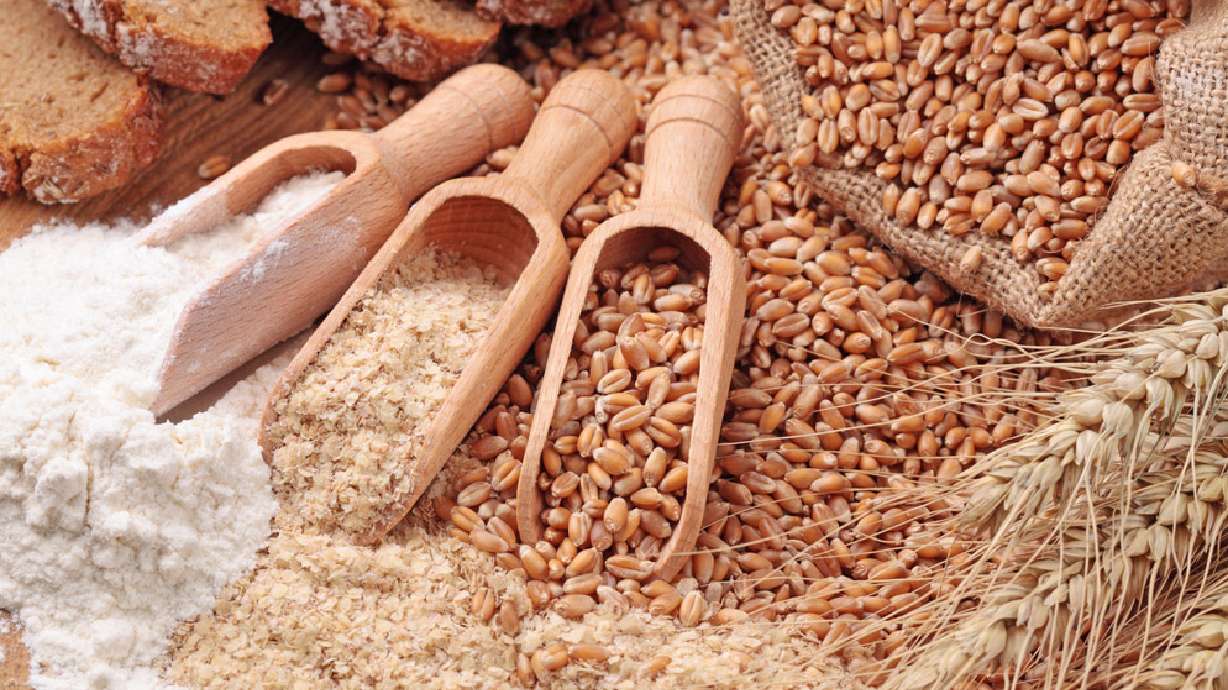Estimated read time: 5-6 minutes
This archived news story is available only for your personal, non-commercial use. Information in the story may be outdated or superseded by additional information. Reading or replaying the story in its archived form does not constitute a republication of the story.
You've heard the old adage that "a failure to plan is a plan to fail." When it comes to food storage, that principle couldn't be truer. Be Ready Utah advises families to have a one-month supply of food, while working up to a three-month supply if possible — and that's no easy task without a plan.
Unfortunately, many families creating or replenishing their food supply fall into common pitfalls that can compromise nutrition, waste resources, and possibly endanger survival during emergencies. If you're unsure your food storage supply is up to snuff, it's important to recognize some common mistakes many families make – and avoid them in your own efforts.
Mistake 1: Storing food that is unhealthy or lacks nutrients
A common oversight in emergency food storage is focusing solely on the quantity of food and neglecting its nutritional quality. Long shelf-life items often are high in sodium and preservatives but low in essential nutrients.
While many people tend to consider comfort foods like overly processed snacks as appropriate for emergency situations, keep in mind that your body's nutritional needs don't change in an emergency situation. In fact, they become even more critical.
Opting for a balance of proteins, fats and carbohydrates, and incorporating vitamins and minerals is crucial to a successful food storage plan. The HLTH Code Complete Meal is an excellent option for anyone in the family. It's a meal replacement shake that is carefully formulated to provide the essential macronutrients you need in a meal.
Co-founder Joel Bikman said, "HLTH Code Complete Meal is based on research, not fads. With just two scoops of powder and one cup of water, you can feel confident that you're getting optimal amounts of macro- and micro-nutrition to help you thrive, regardless of the situation you find yourself in."
The Centers for Disease Control also recommends adding dried fruits and vegetables, nuts, whole grains and canned proteins to ensure a well-rounded diet.

Mistake 2: Storing food you don't use and enjoy
It's tempting to buy bulk emergency food kits without considering personal or family preferences. This mistake can lead to a significant waste of money and resources when the time comes to use those supplies.
Foods unfamiliar or unappealing to your family are likely to be consumed reluctantly, if at all. Additionally, foods you would never touch on a daily basis are not rotated and replenished, leading to a higher likelihood your stash will expire when you need it most. Be Ready Utah advises families to "eat what you store and store what you eat," which is a good rule of thumb when building a supply.
Mistake 3: Keeping impractical, inconvenient or bulky food
The allure of large, economy-sized packages can be strong, especially when trying to get the most bang for your buck. However, such bulk items can be impractical in terms of storage space and during actual emergencies.
Large containers may not be easily portable in case of evacuation, and once opened, food can spoil before it's consumed.
Instead, focus on smaller, individually packaged items that are easy to transport and use. Additionally, consider the preparation needs of your food. If your emergency plan relies on electricity or specific cooking appliances, you might find yourself unable to prepare these foods in a power outage.

Mistake 4: Spending too much on stored food
Investing in emergency preparedness is essential, but it doesn't have to break the bank. Some families allocate excessive budgets towards elaborate food storage systems and gourmet emergency food options.
Instead, allocate a reasonable portion of your budget to gradually build your supplies. Look for sales, bulk purchasing options, and consider DIY options like canning and dehydrating foods at home.
When you buy cans and shelf-stable items, rotate them with the ones already on your shelf so you're using them as you go. This will keep your stash fresher longer and ensure you eat and use the foods you buy.
By spreading out purchases and seeking cost-effective solutions, you can avoid financial strain while still being adequately prepared.
Mistake 5: Stocking food that's difficult to prepare
In an emergency, the last thing you want is to struggle with food preparation. According to the CDC, foods that don't require cooking, water or special preparation are best for emergency situations where water and electricity may be scarce.
With that in mind, it's important to have a variety of no-cook items like ready-to-eat canned meats, fruits, vegetables and snacks, or complete meal solutions that are also delicious.
The bottom line is to plan meals that are simple to make under any circumstances; this not only conserves resources but also reduces stress during difficult times.
HLTH Code is an excellent food preparedness resource
For a simple no fuss meal option, keep HLTH Code Complete Meal on your food storage shelf.

Reviewer Christi said, "I was skeptical that this shake would taste good and fill me up but it is amazing. I stay full for many hours and can hardly believe it. I have great confidence that I'm going to stay satisfied throughout the day."
If you want confidence and ease in your emergency food storage, make sure you stock your shelves with simple nutrition that requires little or no extra work.
Visit getHLTH.com to get started. For exclusive savings on your first order, enter the discount code KSL at checkout.








